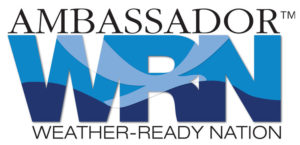According to conventional wisdom, NASCAR stock car racing was a regional sport born in the Southeast and confined to that geographic area until its explosion of popularity in the late 20th century.
That conventional wisdom, however, ignores the flourishing activity in the sport on the West Coast, activity that closely paralleled the rise of NASCAR in the South.
The official “born-on” date of NASCAR is Dec. 14, 1947, when Bill France Sr. called the sanctioning body‘s formative meeting in the Streamline Hotel‘s Penthouse Club in Daytona Beach.
But France was widely traveled, and in 1950—a year after NASCAR ran its first season in what was then called Strictly Stock—he met Oregonian Hershel McGriff at the Pan-American Road Race in Mexico.
“He (France) was there with Curtis Turner to run the race,” McGriff recalled in his induction speech at the NASCAR Hall of Fame in January. “My neighbor had bought me a 1950 Olds for that five-day, 2,132-mile race through Mexico. I found a sponsor to pay the $600 entry fee…
“Bill noticed me because I was competitive throughout the race with him and Curtis. I think out of 132 entries, at 22 years old, I ended up winning the race. There were other NASCAR drivers there, too—Red Byron, Raymond Parks, Fonty and Bob Flock, and Johnny Mantz…
“After the race, Bill invited me to come to the first Southern 500 at Darlington, which was four months later. We drove the car from Portland (Ore.) to Darlington, raced 500 miles and then we drove it back home.”
The race attracted a field of 75 drivers competing for the $5,000 winner‘s share, a colossal prize at the time. Driving the 1950 Oldsmobile, McGriff started 44th and finished ninth, 26 laps down. Mantz won the inaugural crown-jewel event by nine laps.
McGriff‘s presence at the Southern 500 was more than just cross-pollination between East and West. It fueled France‘s vision of creating a national—even international—sport.
By 1951, NASCAR‘s top series, by then known as “Grand National,” had California on its schedule. Marshall Teague won the debut Golden State race in front of 9,000 fans at Carrell Speedway in Gardena, a half-mile dirt track.
France‘s vision also included the establishment of a West Coast series that could serve to develop the talents of drivers unable to make costly trips to the South.
The Pacific Coast Late Model Circuit, founded in 1954, has evolved into what is now the ARCA Menards West Series after competing under the NASCAR Winston West Series label from 1971 through 2003 (though there were variations of the nomenclature during that period).
During the inaugural season, McGriff won the Pacific Coast Late Model Race at Bay Meadows Speedway in San Mateo. From a nine-race schedule in 1954, the series grew.
France entrusted two key figures with the health and prosperity of the West Coast racing—Les Richter, an all-pro linebacker with the Los Angeles Rams who managed Riverside International Raceway and later became vice president of special projects for International Speedway Corporation; and Ken Clapp, now-retired NASCAR vice president who, by his own estimation, promoted more than 4,800 single-day racing events during his illustrious career.
As the West Series was growing, so was the presence in California of NASCAR‘s top division. The NASCAR Cup Series raced 48 times on the road course at Riverside, starting in 1958. From 1970 through 1981, the Riverside race was the opening event on the NASCAR schedule.
From 1971 through 1980, Cup drivers plied their trade at Ontario Motor Speedway, a 2.5-mile behemoth touted as the “Indianapolis of the West.” Appropriately, perhaps, A.J. Foyt won the first two races at Ontario, in 1971 and 1972.
Clearly, NASCAR had established a strong presence in California long before the opening of Auto Club Speedway in 1997. In celebrating NASCAR‘s 75th anniversary this season, it‘s prudent to remember that NASCAR‘s association with the West Coast is almost as venerable.
It wasn‘t until 1995, however, that the NASCAR Cup Series had its first West-Coast-born champion—Jeff Gordon. But in the 21st century, drivers born in the Pacific Time Zone have won 13 of 22 series titles.
Racing in the Los Angeles area continues to evolve. Riverside and Ontario are defunct, with Ontario Mills Mall now occupying the site of the large oval. The 2.0-mile configuration at Fontana will leave the Cup schedule in 2024, as NASCAR contemplates its conversion to a half-mile short track.
Anticipating that change, the Busch Light Clash at the Coliseum already has brought two years of no-holds-barred short-track racing to Los Angeles proper—and has brought NASCAR racing to a new, broader audience in the process.
— NASCAR Wire Service —

